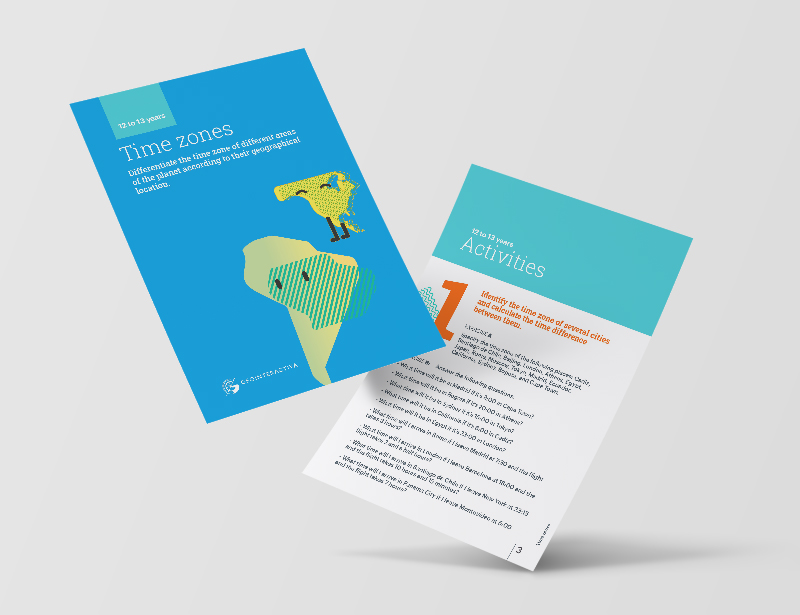
secondary (12-13 years).
The importance of time zones in geography
In this activity, you will discover how time zones are an essential tool in geography for comprehending the worldwide time distribution. Time zones are used to divide the Earth into time zones, each with a one-hour difference.
Within this downloadable resource, you will find a PDF with instructions for enriching your classes. On one hand, we will guide you on which platform tool you will be working with, and on the other hand, we will offer activities suitable for students aged 12-13 years.
Do you want your classes to be stimulating? Start with GeoInteractive today.
we propose teaching geography in an enjoyable manner.
What will your students learn from this educational activity?
The importance of time zones in geography
Time zones are an important tool in geography to understand the distribution of time around the world. Time zones are used to divide the Earth into time zones, each with a one-hour difference. In this article, we will discuss the importance of time zones, how they were established, and how they are used today.
What are time zones?
Time zones are geographic areas that have the same local time. The world is divided into 24 time zones, each of which has a one-hour difference from the adjacent time zone. The central time zone, which is the time zone used as a reference for all others, is the time zone that passes through Greenwich, England, also known as the Greenwich Meridian.
The Greenwich Meridian is an imaginary line that extends from the North Pole to the South Pole and passes through the UK. The meridian was chosen as the reference point for time zones because it is an important geographic location and easy to locate on a map.
How were time zones established?
Time zones were established in 1884 at the International Meridian Conference in Washington D.C. The conference was called to establish a uniform global time system. Before time zones, each city and town had its own local time, which made it difficult to coordinate travel and communications around the world.
The International Meridian Conference decided that the world would be divided into 24 time zones, each with a one-hour difference from the adjacent time zone. The central time zone, which is the time zone used as a reference for all others, is the time zone that passes through Greenwich, England.
Why are time zones important?
Time zones are important because they help us understand the distribution of time around the world. When traveling from one place to another, it is important to know how many hours difference there are between the two places in order to plan the trip properly. Additionally, time zones are important for coordinating international communications and flight schedules.
Time zones are also important for maritime and air navigation. When traveling by sea or air, it is important to know the exact time in order to determine the precise location of the ship or plane.
How are time zones used today?
Today, time zones are used to determine the time in different parts of the world. Each time zone has a one-hour difference from the adjacent time zone. For example, if you are in the central time zone, which is the time zone used as a reference for all others, and travel east, the time will advance one hour for each time zone crossed. If you travel west, the time will be delayed one hour for each time zone crossed.
Time zones are also used to establish schedules for global events and international communications. For example, when announcing a live broadcast of a sports or cultural event, the time and time zone in which it will take place are specified. Additionally, when scheduling meetings or phone calls between people in different parts of the world, it is important to take into account time zones in order to coordinate schedules effectively.
Another important aspect of time zones is their impact on travel and tourism. When traveling to a new time zone, it is important to adjust the clock to avoid confusion and arrive on time for scheduled commitments. Additionally, time zones can also affect travel itinerary planning, as some destinations may have different operating hours for tourist services such as restaurants, museums, or attractions.
Conclusions
In summary, time zones are an important tool for understanding and coordinating time in the modern world. They allow for more efficient scheduling of work, communication, and international events, and have a significant impact on travel and tourism. It is essential for geography students to understand the importance of time zones and how they apply in different situations in daily life and in the global arena.